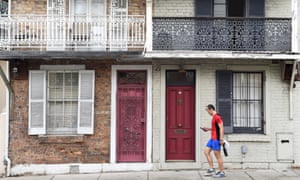Extract from The Guardian
Financial security report says Australians renting in midlife (45 to
49) are likely to continue to rent and be ‘highly impoverished’ in
retirement


If you do not own a home by the time you are 45, you are unlikely to
ever own one, according to a new report on the impact of housing on
financial security in retirement.
The report from Swinburne University of Technology has painted a grim picture of Australians’ housing security, with a widening gap between homeowners and those in private rental accommodation.
The latter were particularly vulnerable to adverse life events such as the breakdown of a marriage or redundancy, with devastating and potentially insurmountable effects.
The report, Security in retirement: the impact of housing and key critical life events, found that a large number of Australians were unable to save for retirement, with the housing market itself a “source of impoverishment”.
People renting in midlife (defined as aged 45 to 49), either alone or with partners, were likely to continue to rent – and be “highly impoverished” – in retirement.
The report from Swinburne University of Technology has painted a grim picture of Australians’ housing security, with a widening gap between homeowners and those in private rental accommodation.
The latter were particularly vulnerable to adverse life events such as the breakdown of a marriage or redundancy, with devastating and potentially insurmountable effects.
The report, Security in retirement: the impact of housing and key critical life events, found that a large number of Australians were unable to save for retirement, with the housing market itself a “source of impoverishment”.
People renting in midlife (defined as aged 45 to 49), either alone or with partners, were likely to continue to rent – and be “highly impoverished” – in retirement.
The number of Australians – overwhelmingly renters living alone – experiencing housing insecurity and impoverishment in retirement was increasing.
Women were particularly vulnerable as they not only tended to be poorer than men, but more susceptible to having their wealth impacted by “critical life events”. Renters over the age of 70 were twice as likely to be women and very poor.
Researchers also found “distinctly gendered pathways” into rental poverty in older age, with women disadvantaged by the cost of care and the gender wage gap. For men, rental poverty reflected low educational attainment, low income, and disability.
Sharam and her co-authors have called for substantial investment in affordable housing to provide non-homeowners who are not eligible for social housing but cannot afford to buy themselves with more options and security in later life.
“If such housing is not forthcoming over future decades, Australia will have a sizeable minority of its older households in a unsustainable housing position.”
There are close to 426,000 people aged over 50 living either alone or with partners in private rental accommodation across Australia. That number is expected to rise to more than 606,300 people in 2030 and more than 832,300 in 2050.
The shortage of affordable housing would leave people in midlife, and low-income households in general, constrained to rent, said Sharam.
“In Australia, it’s a very bad thing, because we don’t have the policy settings that will mitigate the negative impacts – therein lies the problem. We have very weak tenancy laws and people are subjected to short-term leases where the rents can go up and up with the market.”
As well as increasing eligibility for social housing and providing for security of tenure in residential tenancies legislation, Sharam and her co-authors recommended introducing measures to ease the pressure in the property market.
Removing the capital gains concession and targeting negative gearing to new supply only would dampen the inflation of house prices and encourage the growth of more affordable stock.
Researchers were also in favour of reinstating death duties or a moderate inheritance tax to raise funds for a program for affordable housing, separate from social housing.
Sharam pointed to two Melbourne-based initiatives as steps in the right direction: Property Collectives, a joint venture property development project, and Nightingale Housing, which proposes a new model for affordable, inner-city residential developments.
She said people were discouraged from saving for retirement by unaffordable house prices, which only meant they were more vulnerable to adversity such as sudden redundancy or the end of a relationship.
“As soon as you have an asset, your options open up – you have insurance in your life. Once you have some equity behind you, the impact of a critical life event will not be as severe.”
But the housing market now, said Sharam, was “kind of like a casino”: “You have people who put their money in and get nothing out and on the other side you get people who are suddenly wealthy.”
She said the government had encouraged people to “think about housing as a way to make money”, which came at the expense of those shut out of the market and destabilised both the private rental sector and the broader financial sector.
“This report doesn’t say anything that’s new, in terms of recommendations particularly.
“Housing academics across Australia have a high degree of consensus ... We tell governments many, many times the kinds of things they need to do but there doesn’t seem to be the will to do it.”
Sharam hoped “Generation Rent” would start to exert its influence.
“They cannot be passive at this point in time. ... It’s a moral question as well as a political one.”
No comments:
Post a Comment